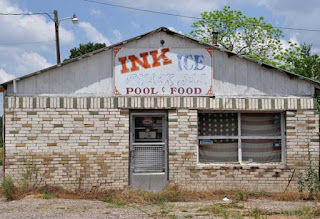 |
| The famous 1874 Washington Courthouse is now the visitor center. |
 |
| Black's forge where the 1st Bowie knife was made for Jim Bowie. |
Located in Hempstead County, Washington was established as the first county seat. It was located on the famous Southwest Trail (the earliest road across the state) and, due to its closeness to the then Mexican border, was a stopover for pioneers traveling west to Texas. Davy Crockett, Sam Houston and Jim Bowie stopped in Washington on their way to die in defense of the Alamo. Legend say's Houston planned parts of the revolt strategy in a tavern in Washington during 1834. James Black, a talented blacksmith in the town, was commissioned by Jim Bowie to create the original Bowie Knife in 1831. It was this knife he became famous for and died wielding at the Alamo.
 |
| Planted in 1839, this magnolia tree has seen a lot of history. |
Unfortunately for the residents, the coming of the railroad era and the establishment of the new town of Hope along the rail line which had bypassed Washington started the town on a path of decline. In 1875, a fire destroyed much of the business district. It was rebuilt, but another fire in 1883 destroyed most of the remaining old businesses in town. Hope was becoming the new shipping and trading center for Hempstead County and Washington residents began to move away. By 1900, only 374 persons were living in town. Repeated attempts to move the county seat to Hope finally succeeded in 1939 further hastening Washington's decline.
 |
| Archeological dig - notice the cannon balls they found? |
Located on Highway 278 just nine miles from Hope (from I-30, take exit 30), the park is open year round from 8:00 a.m. - 5:00 p.m. except Thanksgiving, Christmas, and New Year's Day.
 |
| Well preserved Washington pioneer cemetery. |
















